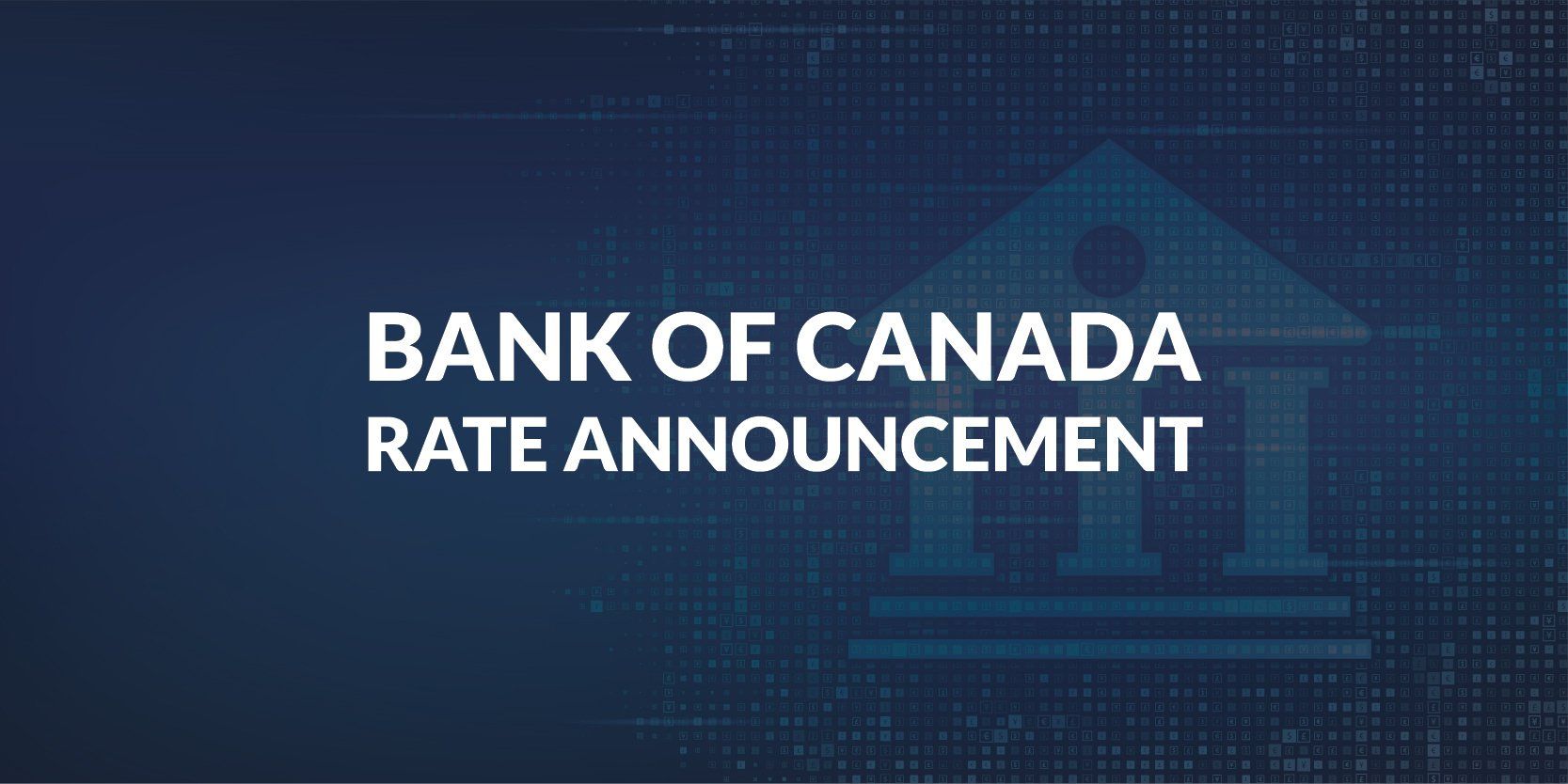Bank of Canada Rate Announcement Mar 10th, 2021
The Bank of Canada today held its target for the overnight rate at the effective lower bound of ¼ percent, with the Bank Rate at ½ percent and the deposit rate at ¼ percent. The Bank is maintaining its extraordinary forward guidance, reinforced and supplemented by its quantitative easing (QE) program, which continues at its current pace of at least $4 billion per week.
The global economy is recovering from the economic effects of COVID-19, albeit with ongoing unevenness across regions and sectors. The US economic recovery appears to be gaining momentum as virus infections decline and fiscal support boosts incomes and consumption. New fiscal stimulus will increase US consumption and output growth further. Global yield curves have steepened, largely reflecting the improved US growth outlook, but global financial conditions remain highly accommodative. Oil and other commodity prices have risen. The Canadian dollar has been relatively stable against the US dollar, but has appreciated against most other currencies.
In Canada, the economy is proving to be more resilient than anticipated to the second wave of the virus and the associated containment measures. Although activity in hard-to-distance sectors continues to be held back, recent data point to continued recovery in the rest of the economy. GDP grew 9.6% in the final quarter of 2020, led by strong inventory accumulation. GDP growth in the first quarter of 2021 is now expected to be positive, rather than the contraction forecast in January. Consumers and businesses are adapting to containment measures, and housing market activity has been much stronger than expected. Improving foreign demand and higher commodity prices have also brightened the prospects for exports and business investment.
Despite the stronger near-term outlook, there is still considerable economic slack and a great deal of uncertainty about the evolution of the virus and the path of economic growth. The labour market is a long way from recovery, with employment still well below pre-COVID levels. Low-wage workers, young people and women have borne the brunt of the job losses. The spread of more transmissible variants of the virus poses the largest downside risk to activity, as localized outbreaks and restrictions could restrain growth and add choppiness to the recovery.
CPI inflation is near the bottom of the 1-3 percent target band but is likely to move temporarily to around the top of the band in the next few months. The expected rise in CPI inflation reflects base-year effects from deep price declines in some goods and services at the outset of the crisis a year ago, combined with higher gasoline prices pushed up by the recent run-up in oil prices. CPI inflation is then expected to moderate as base-year effects dissipate and excess capacity continues to exert downward pressure. Measures of core inflation currently range from 1.3 to 2 percent.
While economic prospects have improved, the Governing Council judges that the recovery continues to require extraordinary monetary policy support. We remain committed to holding the policy interest rate at the effective lower bound until economic slack is absorbed so that the 2 percent inflation target is sustainably achieved. In the Bank’s January projection, this does not happen until into 2023. To reinforce this commitment and keep interest rates low across the yield curve, the Bank will continue its QE program until the recovery is well underway. As the Governing Council continues to gain confidence in the strength of the recovery, the pace of net purchases of Government of Canada bonds will be adjusted as required. We will continue to provide the appropriate degree of monetary policy stimulus to support the recovery and achieve the inflation objective.
Information note
The next scheduled date for announcing the overnight rate target is April 21, 2021. The next full update of the Bank’s outlook for the economy and inflation, including risks to the projection, will be published in the MPR at the same time.
Recent Posts



Contact Me Anytime!
The best way to get ahold of me is to submit through the contact form below. However feel free to give me a shout on the phone as well.



